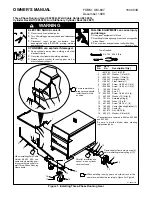
The caption of this button indicates the current state of the filter. Press the
ACTIVE button to deactivate the filter (Bypass), which allows for quick A / B-
evaluation of the actual effect that a filter has on the sound.
Press the EQ FLAT button to reset all filters to type PEQ with 0 dB.
Filter Editing via “Mouse Movement” in the Graphics Display
A white dot in the frequency response display represents an active filter (BYPASS not engaged). Clicking with the left
mouse button on this dot and keeping the mouse button pressed down allows changing the selected filter’s frequency
by moving the mouse to the left or to the right as well as its gain or cut (depending on the selected filter type) by
moving the mouse up or down. Clicking with the right mouse button on the white dot and keeping the mouse button
pressed down allows changing the Q-values. For an improved overview the name of the corresponding filter band
appears in color as soon as the mouse cursor is positioned over its white dot. An additional white graph indicates the
frequency response of the actually selected filter.
OUTPUT X-OVER
The Output X-Over window allows accessing the frequency crossover with Hi- and Lo-Pass filters, a delay, gain-trim and
polarity selector switch. By means of these parameters you are able to correctly configure a multi-way speaker
system’s individual frequency bands, compensate for natural delays and adjust levels.
Graphics Display Indication
The graphics display offers several different display modes, as described in the following table. Indication generally
includes all effects of filters that are located pre X-Over (e.g. Array Parametric EQ), which always provides precise over-
view and control of the resulting frequency response at this point.
Element
Description
Switch for displaying frequency response (magnitude) or phase response (phase)
Switch for scaling the dB-axis to 25 dB (± 12.5 dB) or to 50 dB (± 25 dB)
Displays the resulting transfer function of all filter and level trim settings and therefore graphically
displaying the audible result at the amplifier‘s outputs. The audible result is displayed in bright
colors while all ”electrical” graphs are drawn in dark colors.
IRIS-Net
REMOTE AMPLIFIER | en 271
Bosch Security Systems B.V.
User Manual
2017.05 | 3.20 | F.01U.119.956
















































